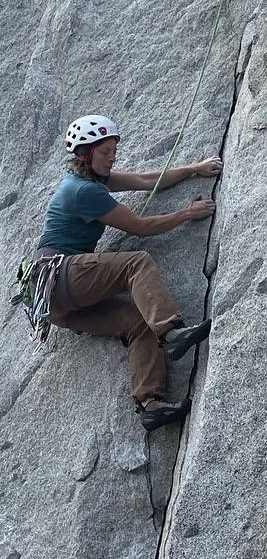As described in previous blogs about injury risk, flexor tendon pulleys, and climbing techniques, rock climbing injuries are a common reason people seek physical therapy in South Boulder. Some of these climbers have gotten magnetic resonance imaging (MRI), which can show pathology such as rotator cuff tears. As MRI technology improves, it is important to remember that imaging findings are not predictive of pain.1-8 This blog reviews a 2022 study9 that looked at the MRI results of the shoulders of elite-level asymptomatic rock climbers:
Who was studied:
50 climbers, aged 20-60 years, with NO shoulder pain underwent physical and MRI examinations.
Inclusion criteria:
Climbed at grade of 5.11 or higher for at least 5 years, had no shoulder-related complaints, had no history of previous shoulder surgery or previous injury
Results:
MRI evidence of tendinosis of the rotator cuff, subacromial bursitis, and long head of the biceps tendonitis was exceptionally common, at 80%, 79%, and 73%, respectively.
Labral pathology was present in 69% of shoulders, with discrete labral tears identified in 56%.
Articular cartilage changes were also common, with humeral pathology present in 57% of shoulders and glenoid pathology in 19% of shoulders.
Conclusion:
The overall prevalence of intra-articular shoulder pathology detected by MRI in asymptomatic climbers was 80%, with 57% demonstrating varying degrees of glenohumeral articular cartilage damage.
What this means for you:
The climbers that were studied had a high percentage of shoulder pathology as seen on MRI. However, they did not have any shoulder pain and they were climbing at a high level. If you receive a diagnosis based on an MRI, it is important to remember that it is possible to have a shoulder diagnosis and still climb strong and without pain
Next steps:
If you have shoulder pain, you may benefit individualized physical therapy with Dr. Sarah Burkhardt.
or email sarah@seatosummitpt.com with any questions!
References:
- Brinjikji W, Luetmer PH, Comstock B, et al. Systematic literature review of imaging features of spinal degeneration in asymptomatic populations. AJNR Am J Neuroradiol. 2015;36(4):811-816. doi:10.3174/ajnr.A4173
- Jensen MC, Brant-Zawadzki MN, Obuchowski N, Modic MT, Malkasian D, Ross JS. Magnetic resonance imaging of the lumbar spine in people without back pain. N Engl J Med. 1994;331(2):69-73. doi:10.1056/NEJM199407143310201
- Yao W, Zhang Y, Zhang L, et al. MRI features of and factors related to ankle injuries in asymptomatic amateur marathon runners. Skeletal Radiol. 2021;50(1):87-95. doi:10.1007/s00256-020-03530-9
- Englund M, Guermazi A, Gale D, et al. Incidental meniscal findings on knee MRI in middle-aged and elderly persons. N Engl J Med. 2008;359(11):1108-1115. doi:10.1056/NEJMoa0800777
- Culvenor AG, Øiestad BE, Hart HF, Stefanik JJ, Guermazi A, Crossley KM. Prevalence of knee osteoarthritis features on magnetic resonance imaging in asymptomatic uninjured adults: a systematic review and meta-analysis. Br J Sports Med. 2019;53(20):1268-1278. doi:10.1136/bjsports-2018-099257
- Silvis ML, Mosher TJ, Smetana BS, et al. High prevalence of pelvic and hip magnetic resonance imaging findings in asymptomatic collegiate and professional hockey players. Am J Sports Med. 2011;39(4):715-721. doi:10.1177/0363546510388931
- Connor PM, Banks DM, Tyson AB, Coumas JS, D’Alessandro DF. Magnetic resonance imaging of the asymptomatic shoulder of overhead athletes: a 5-year follow-up study. Am J Sports Med. 2003;31(5):724-727. doi:10.1177/03635465030310051501
- Culvenor AG, Øiestad BE, Hart HF, Stefanik JJ, Guermazi A, Crossley KM. Prevalence of knee osteoarthritis features on magnetic resonance imaging in asymptomatic uninjured adults: a systematic review and meta-analysis. Br J Sports Med. 2019;53(20):1268-1278. doi:10.1136/bjsports-2018-099257
- Cooper JD, Seiter MN, Ruzbarsky JJ, et al. Shoulder Pathology on Magnetic Resonance Imaging in Asymptomatic Elite-Level Rock Climbers. Orthop J Sports Med. 2022;10(2):23259671211073137. Published 2022 Feb 11. doi:10.1177/23259671211073137

